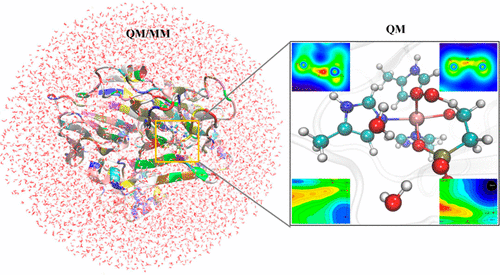当前位置:
X-MOL 学术
›
ACS Earth Space Chem.
›
论文详情
Our official English website, www.x-mol.net, welcomes your feedback! (Note: you will need to create a separate account there.)
Computational Evidence for the Enzymatic Transformation of 2-Hydroxypropylphosphonate to Methylphosphonate
ACS Earth and Space Chemistry ( IF 3.4 ) Pub Date : 2018-07-12 00:00:00 , DOI: 10.1021/acsearthspacechem.8b00070 Yanwei Li 1 , Xiaodan Wang 1 , Ruiming Zhang 1 , Junjie Wang 1 , Zhongyue Yang 2 , Likai Du 3 , Xiaowen Tang 4 , Qingzhu Zhang 1 , Wenxing Wang 1
ACS Earth and Space Chemistry ( IF 3.4 ) Pub Date : 2018-07-12 00:00:00 , DOI: 10.1021/acsearthspacechem.8b00070 Yanwei Li 1 , Xiaodan Wang 1 , Ruiming Zhang 1 , Junjie Wang 1 , Zhongyue Yang 2 , Likai Du 3 , Xiaowen Tang 4 , Qingzhu Zhang 1 , Wenxing Wang 1
Affiliation

|
Understanding the origins of greenhouse gas methane in the ocean is of great environmental importance, especially for global climate change and the flow of carbon within the earth surface system. A mutant (E176H) of 2-hydroxyethylphosphonate dioxygenase (HEPD) has been reported to catalyze the transformation of 2-hydroxypropylphosphonate (2-HEP) to methylphosphonate (MPn), a compound that can be easily transformed to methane by C–P lyase in a marine microbe. Here, the HEPD E176H-catalyzed transformation of 2-HEP to MPn was investigated at the molecular level using the quantum mechanics/molecular mechanics method. The results evidenced the feasibility of the transformation of 2-HEP to MPn and highlighted that the transformation contains five elementary steps: H abstraction, O–O bond cleavage, H transfer, C–C bond cleavage, and MPn formation. H abstraction was found to be the rate-determining step with an energy barrier of 17.8 kcal/mol, which is in reasonable accordance with the experimentally determined rate constant (0.38 s–1, corresponding to 18.0 kcal/mol). Three intersystem crossing events were involved in H-abstraction, H-transfer, and MPn-formation steps. Residue electrostatic analysis on the rate-determining step suggests that proper mutation of Tyr174 may improve the enzymatic efficiency.
中文翻译:

2-羟丙基膦酸酯酶促转化为甲基膦酸酯的计算证据
理解海洋中温室气体甲烷的起源具有重大的环境意义,特别是对于全球气候变化和地表系统中碳的流动而言。据报道,2-羟乙基膦酸酯双加氧酶(HEPD)的突变体(E176H)催化2-羟丙基膦酸酯(2-HEP)转化为甲基膦酸酯(MPn),该化合物可通过C-P裂解酶轻松转化为甲烷。海洋微生物。在这里,使用量子力学/分子力学方法在分子水平上研究了HEPD E176H催化的2-HEP到MPn的转化。结果证明了将2-HEP转化为MPn的可行性,并强调了该转化包含五个基本步骤:H提取,O-O键断裂,H转移,CC键断裂和MPn形成。–1,对应于18.0 kcal / mol)。H提取,H转移和MPn形成步骤涉及三个系统间交叉事件。速率确定步骤上的残留静电分析表明,Tyr174的适当突变可以提高酶的效率。
更新日期:2018-07-12
中文翻译:

2-羟丙基膦酸酯酶促转化为甲基膦酸酯的计算证据
理解海洋中温室气体甲烷的起源具有重大的环境意义,特别是对于全球气候变化和地表系统中碳的流动而言。据报道,2-羟乙基膦酸酯双加氧酶(HEPD)的突变体(E176H)催化2-羟丙基膦酸酯(2-HEP)转化为甲基膦酸酯(MPn),该化合物可通过C-P裂解酶轻松转化为甲烷。海洋微生物。在这里,使用量子力学/分子力学方法在分子水平上研究了HEPD E176H催化的2-HEP到MPn的转化。结果证明了将2-HEP转化为MPn的可行性,并强调了该转化包含五个基本步骤:H提取,O-O键断裂,H转移,CC键断裂和MPn形成。–1,对应于18.0 kcal / mol)。H提取,H转移和MPn形成步骤涉及三个系统间交叉事件。速率确定步骤上的残留静电分析表明,Tyr174的适当突变可以提高酶的效率。



























 京公网安备 11010802027423号
京公网安备 11010802027423号